- What Is 360° Digital Marketing and Why Does It Matter for FMCG?
- A Holistic Definition
- Why 360° Digital Marketing Is Crucial for FMCG Brands
- Middle East Digital Behavior Snapshot
- Bringing Cohesion Across Channels: A Middle Eastern Perspective
- The Problem with Fragmented Messaging
- Core Elements of a 360° Digital Strategy
- Regional Considerations for the UAE and GCC
- Case Studies: Integrated Campaigns that Delivered ROI
- Regional Case: Health Snack Brand with Influencer + Paid + CRM Sync
- Global Inspiration: How Dove Localized Its “Real Beauty” Campaign in MENA
- Key Takeaway
- Measuring Success Across the Full Funnel
- Aligning Metrics with Stages of the Customer Journey
- Tools and Techniques
- ROI Is More Than ROAS
- How Lamana Builds and Executes 360° Strategies
- Our Process in 5 Phases
- Real Campaign Touchpoints
- Integrated Experiences Build Enduring Brands
In today’s digital world, the customer journey is no longer a simple or linear process. They constantly move across platforms, languages, and devices. It may all happen in one day. In such circumstances, especially in the fast-paced and competitive markets of the Middle East, only brands with a consistent and coordinated presence throughout all the stages of the customer journey can stand out.
360° Digital Marketing is a thoughtful response to this need. Brands can go beyond short-term sales and build lasting relationships with their audience by integrating all digital channels into one unified strategy. FMCG brands that are committed to this strategy have managed to gain trust and reliability in even the most saturated markets.
This article will define what 360° digital marketing means and explain its importance for FMCG brands. In addition, we will examine how it aligns with Middle Eastern digital behaviors to build loyalty rather than one-time sales.
What Is 360° Digital Marketing and Why Does It Matter for FMCG?
A 360° digital marketing strategy, also known as integrated digital marketing, is an approach that incorporates all customer-facing digital channels, such as social media, content marketing, email, paid ads, CRM, and websites into one cohesive strategy.
Instead of separate campaigns or platforms, a 360° strategy brings everything together to create one coordinated and recognizable brand experience across the entire digital journey. It means aligning all your key digital touchpoints, including:
- Social media
- Content marketing
- Email campaigns
- Paid advertising
- CRM systems
- Website and mobile platforms
A Holistic Definition
A 360° digital marketing strategy is able to replace separate messaging with one clear voice across all channels, making the brand more trustworthy and familiar regardless of where the customer interacts with it.
Let’s say someone comes across your brand through an Instagram ad. Curiously, they click through to your website. A few days later, they received a promotional email from you. As a result, they read the reviews or watch a YouTube video about your product. In each of these steps, the look, tone, and message seem connected and consistent.
According to NapoleonCat, the main idea behind a 360° digital marketing strategy is to ensure that the customer does not feel like they are dealing with a different brand at every touchpoint. In other words, a wide range of channels is integrated into one clear and cohesive story. This strategy will build trust because the brand sounds reliable and familiar wherever the customer encounters it.
In short, a 360° digital marketing strategy is about building consistency, relationships, and long-term loyalty.

Why 360° Digital Marketing Is Crucial for FMCG Brands
FMCG brands work in a fast-paced environment where purchase decisions are often made impulsively and are based on familiarity. That is exactly why a 360° digital marketing strategy works so well. It amplifies the impact of each customer interaction through repetition and recognition.
The main reasons FMCG brands benefit from this strategy are:
- Enhance brand recall: FMCG purchases rely on brand recognition. In other words, shoppers tend to grab names they remember. A 360° approach amplifies your message across multiple channels, so consumers see your brand in various contexts. This repetition leads to stronger brand recall and familiarity, allowing customers to remember it when they are at the store.
- Strengthen emotional consistency: When your message is unified, it creates a stable and reliable image in consumers’ minds. Whether they see your social post or a banner ad, it feels like the same brand with the same values. Therefore, it will build a sense of trust and emotional consistency.
- Support short-term and long-term loyalty: FMCG campaigns often seek limited-time offers or seasonal promotions, whereas a 360° approach ensures the moments that contribute to a larger journey. It emphasizes the same values across every channel, resulting in a sustainable base of loyal consumers who stick with your brand among its competitors.
Middle East Digital Behavior Snapshot
Marketing in the Middle East, particularly in the UAE, presents both challenges and opportunities due to the region’s diversity and the digital behavior of its audience. Every day, people engage with multiple platforms, which means they need brands to maintain a consistent presence everywhere. A 360° digital marketing strategy is important for FMCG brands if they want to stay connected and relevant, mainly for the following reasons:
- Multi-platform consumption: Consumers use several platforms. In 2024, UAE social media statistics revealed that WhatsApp is used by 85% of the population, while Facebook and Instagram are used by about 80%. TikTok and YouTube are rapidly reaching 70% and 94%, respectively. A typical buyer might discover a product on Instagram, research it on YouTube, chat on WhatsApp, and read reviews on Facebook within the same day.
- High mobile and bilingual engagement: The Middle East is a mobile-first region. And smartphone usage is near saturation (96% in the UAE). Therefore, the language of the content must be optimized and available in both Arabic and English to engage a wide range of audiences without fragmenting the brand message.
- Cultural context requires nuanced, cohesive storytelling: Due to the cultural differences in the Middle East, brands must adapt their messaging to local values, traditions, and holidays like Ramadan while maintaining a unified core story. What resonates in Dubai may need to be adapted for other countries, such as Saudi Arabia.
Bringing Cohesion Across Channels: A Middle Eastern Perspective
For a region like the Middle East, which is digitally diverse and culturally rich, holding onto a consistent brand voice across all platforms is both a challenge and a necessity. Since consumers switch between social apps, websites, and messaging platforms daily, brands must ensure that their message feels consistent, no matter where the interaction happens.
A 360° strategy offers the structure needed to deliver this cohesion while still respecting local preferences and cultural differences.
The Problem with Fragmented Messaging
Digital marketing is very competitive and crowded, so inconsistent branding across platforms can hurt a brand’s reputation. As a result, consumers lose trust and interest. For instance, if a Facebook ad promotes one message but a website tells a different story, the brand may appear inconsistent and unreliable.
The main problems caused by fragmented messaging include:
Eroded trust: Consumers expect a consistent experience. They start to doubt the brand’s reliability when they see different tones, visuals, or offers in emails, social media, and websites. For example, a bold, exciting tone on Instagram in contrast to a formal, dry message in an email, weakens brand identity.
Confused experience: When messaging does not align across platforms, the customer journey sounds disjointed and confusing. According to the Exclaimer article, a product shown as “in stock” in one channel but “unavailable” on another creates frustration.
Lost momentum: Each campaign should build on the last, but disconnected efforts fail to reinforce one another. Running separate ads that do not connect to the same landing page or brand story limits overall impact.
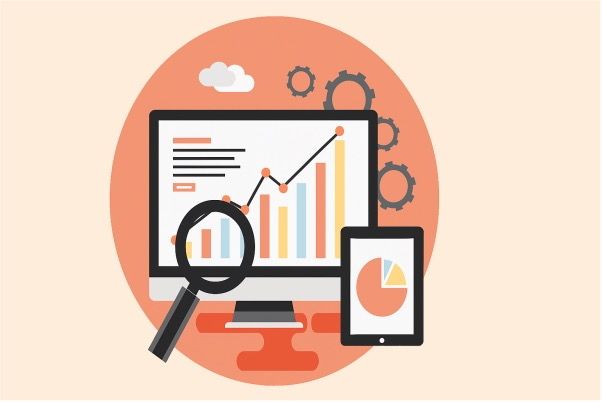
Core Elements of a 360° Digital Strategy
A 360° digital marketing strategy connects all channels into one consistent brand experience. This alignment helps prevent conflicting messages and builds greater trust with the audience.
This approach is based on three elements:
- Unified brand voice and visuals: Every ad and social post should feel like it comes from the same brand. One case study in CS-Cart showed that when seven separate companies aligned under a single, integrated voice and visual identity, engagement and referrals rose significantly.
- Cross-channel content planning: The content and budget for paid, owned, and earned media should be planned in an integrated manner. For example, a single brand video might be edited into short clips for paid ads, embedded on the company website, and promoted organically through social sharing. This strategy maximizes audience reach through channel overlap.
- Clear customer journey mapping: According to the Marketing article, a 360° strategy outlines the full path from awareness to loyalty. A social ad might draw attention, a website provides information and drives conversion, email campaigns build loyalty, and reward programs keep customers interested after purchase.
Regional Considerations for the UAE and GCC
When building a 360° digital marketing strategy in the Middle East, particularly in countries like the UAE and the broader GCC, it is not enough to follow global patterns. The region has its own digital behavior, cultural rhythms, and consumer expectations that FMCG brands must recognize and admire.
In the following, three regional factors are mentioned for localizing your approach and making it truly effective.
- Mobile-first, multilingual engagement: The UAE and GCC countries have some of the highest mobile internet usage rates in the world. GSMA reports that about 81% of mobile connections in the region are smartphone-based, so every digital touchpoint, such as websites, ads, and videos, must be optimized for mobile. Content should also be localized, not just translated; therefore, English and Arabic are both used.
- Culturally sensitive, calendar-aware campaigns: Religious and national events, such as Ramadan, Eid, and National Day, shape buying behavior to a great extent. Campaigns need to reflect local values and be timed around fasting hours, prayer times, and peak engagement windows. For example, Erahoaus explains that scheduling content after Iftar during Ramadan can dramatically boost interaction.
- Integration of online and offline retail: In the Gulf, the gap between digital and in-store shopping is narrowing fast. Many retailers now offer digital kiosks and mobile apps that enhance the in-store experience. For FMCG brands, a 360° strategy should connect digital campaigns with real-world retail touchpoints, which is a unique experience and follows the customer from screen to shelf.
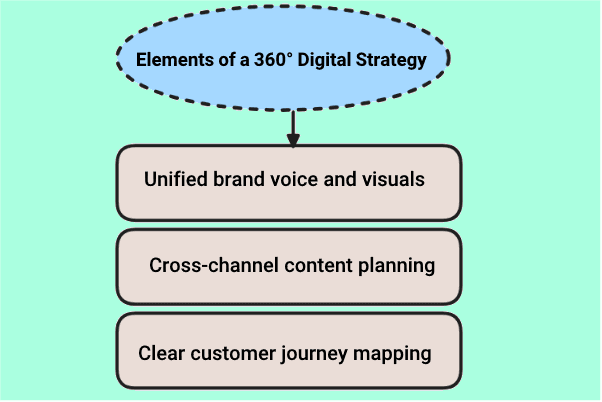
Case Studies: Integrated Campaigns that Delivered ROI
This section provides real-world examples of brands that have used 360° marketing strategies. These campaigns show that unified messaging across numerous channels not only raised brand awareness but also produced measurable returns on investments, because the strategy was unified and efficient.
Regional Case: Health Snack Brand with Influencer + Paid + CRM Sync
The first case study is Koala Picks, a UAE-based health snack brand. It launched a smart 360° digital campaign to encourage parents looking for nutritious snacks for their children. Their approach demonstrates how influencer content, paid media, and CRM can work together to build awareness and drive conversions.
Koala Picks collaborated with UAE mom and content creator Aya Assef, who shared an authentic YouTube review about the snacks and linked it to the brand’s website. The brand then amplified this content with localized and bilingual Meta and Google Display ads optimized for mobile users.
Finally, users who showed interest in the ads were invited to join email and WhatsApp lists, which personalized offers to encourage loyalty.

Watch the full video on YouTube
Another real-world example is NATURALTEIN, a healthy food brand in India that ran a highly integrated campaign combining influencer partnerships, targeted paid ads, and strong CRM and email follow-up. Fitness influencers created attractive content, while paid search and social ads boosted reach.
BrandLoom published the result of this comprehensive and synchronized strategy: a 5× increase in sales, 4× growth in web traffic, and an impressive Return on Ad Spend (ROAS) of approximately 18.6×.
Global Inspiration: How Dove Localized Its “Real Beauty” Campaign in MENA
Dove adapted its global “Real Beauty” campaign for the Middle East by localizing both content and platforms. In Saudi Arabia, the brand launched a short video portraying the puberty experience of young girls, created by local artist Noura Bint Saida, and shared on YouTube and social media.
Dove implemented the following strategies to ensure a strong cultural connection:
- Used a bilingual tagline (#WelcomeToWomanhood + مبروک-كبرتي#)
- Partnered with well-known influencers like Ascia and Raha Moharrak
- Distributed confidence kits in schools, using QR codes to link to videos
This mix of paid, owned, and earned media, along with strong Arabic storytelling, helped Dove achieve broad involvement and local authenticity in the MENA region.
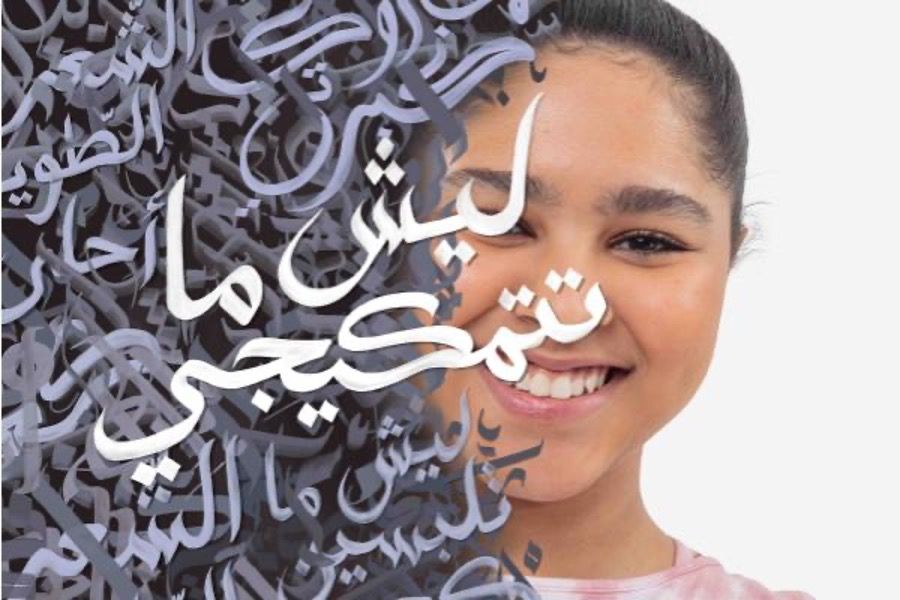
Watch the full video on YouTube
Key Takeaway
Effective marketing happens when all channels are intentionally aligned. Each part of the campaign should support and elevate the others rather than running in isolation. When done appropriately, it delivers far more impact than individual efforts ever could.
Take, for example, the way influencer content, paid ads, and CRM emails can work as a team. Influencers create buzz, ads enhance the reach, and emails keep the conversation going, which turns interest into action and first-time buyers into loyal customers.
Even blending organic with paid research can double the benefits. Broader visibility and shared performance data sharpen both approaches.
Finally, cross-cultural integration is not just a practice; it is the reason some campaigns achieve higher sales and enduring value. The most successful strategies are those that connect every piece into a unified experience.
Measuring Success Across the Full Funnel
An integrated campaign is successful when it delivers results throughout the entire customer journey. From initial awareness to long-term loyalty, each phase has a vital role in building brand value. Brands need to track performance across every touchpoint rather than focusing specifically on clicks or conversions.
In this section, we will explore how full-funnel measurement enables brands to gain a comprehensive view, optimize more efficiently, and drive stronger ROI across all channels.
Aligning Metrics with Stages of the Customer Journey
A 360° digital marketing strategy becomes more effective when the right metrics align with each stage of the customer journey. Consider the following factors to track and measure success at every step:
- Awareness (Top of Funnel): At this stage, brands track impressions, reach, and video views to find out how widely their content is being used. For example, tracking the number of users watching an Instagram video helps measure initial brand visibility.
- Consideration (Middle of Funnel): During this phase, metrics such as clicks, click-through rate (CTR), time spent on page, and email groups help determine how engaged the audience is. For example, an increasing number of newsletter signups indicates that users are showing interest and moving further into the funnel, as reported by Advertising Agency and Funnel.
- Conversion (Bottom of Funnel): In this stage, major indicators are total sales, coupon redemptions, and store visits. Using unique promotions in digital ads allows the brands to track the campaigns directly and observe those that drive real purchases.
- Loyalty (Post-Purchase): Post-purchase metrics like repeat purchase rate, CRM engagement, and user-generated content show customer satisfaction and advocacy. If customers consistently review products or share them online, it signals growing trust and long-term loyalty.
Tools and Techniques
A 360° digital marketing strategy can be evaluated effectively if marketers rely on advanced tools and techniques that connect cross-cultural performance to real business outcomes. Therefore, FMCG brands make smarter decisions.
The following introduces the most important strategies:
- Unified dashboards: Marketers use centralized dashboards to bring together data from multiple platforms. According to DashThis, tools like Google Analytics 4, Meta Ads Manager, and HubSpot can all feed into business intelligence platforms such as Looker, Power BI, or Google Data Studio.
- Attribution modeling: Instead of relying on last-click attribution, many teams use multi-touch attribution to give credit to each marketing interaction that deserves it. For example, if a customer sees a Facebook ad, then clicks on a Google search result, and makes a purchase via an email, multi-touch attribution will capture all of these steps, not just the final click.
- Offline impact tracking: Marketers use promo codes, QR codes, and customer surveys to measure how online efforts drive offline results. A digital ad may offer a special discount code that can be redeemed in-store, which helps link digital spend with physical purchases. A real-world example is LuLu Hypermarket, one of the biggest FMCG retailers that frequently runs digital campaigns during Ramadan, including the use of coupon codes. In one of the Instagram Reels, a special discount is promoted, indicating that customers can use the discount code displayed in the video to visit the store and finalize their purchases.
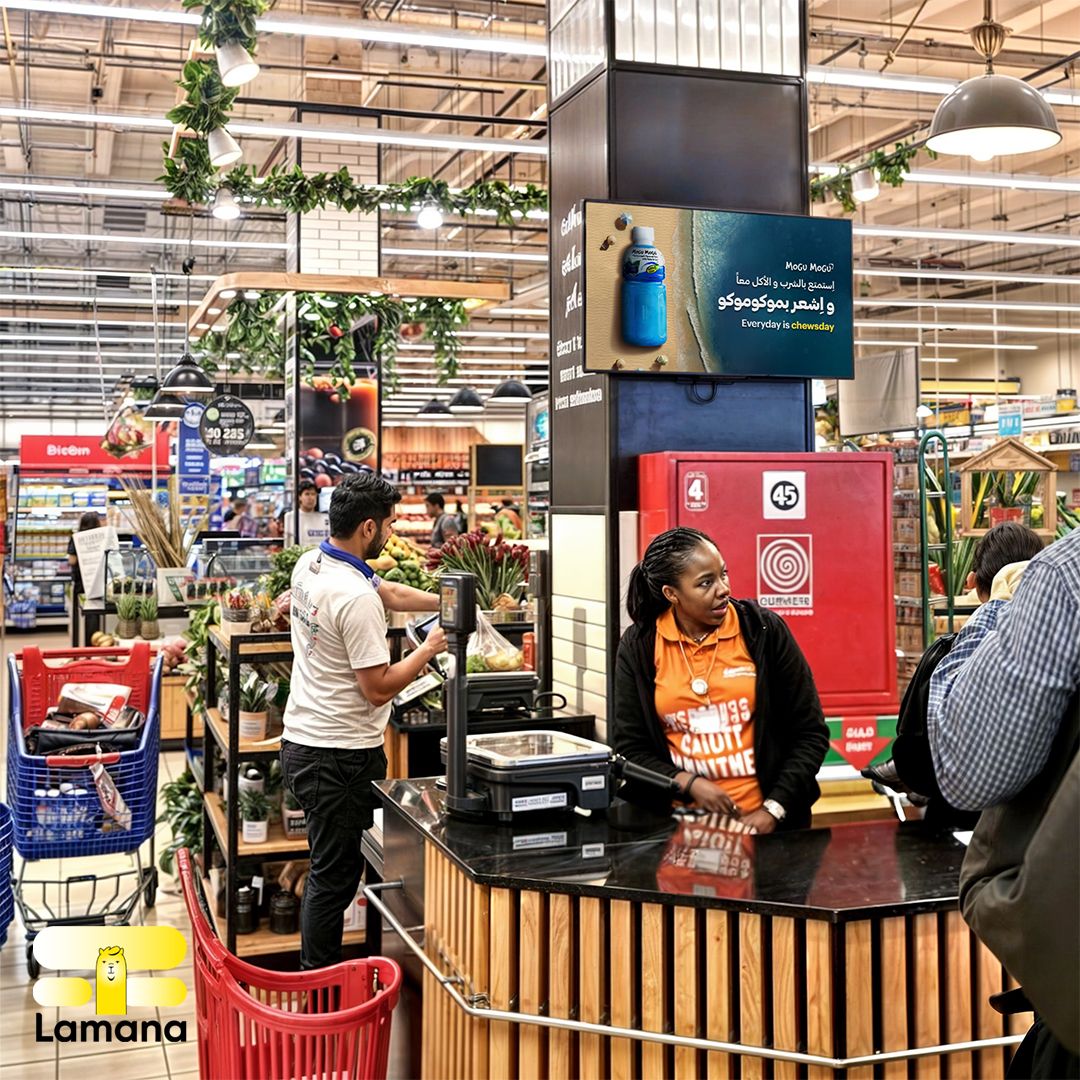
Watch the full video on Instagram
ROI Is More Than ROAS
Although ROAS (Return on Ad Spend) indicates how much money you make per dollar you spend on advertising, it primarily shows immediate outcomes. Brands should take a full-funnel ROI approach to measure the success of a marketing campaign. In other words, effective marketing is not just about today’s clicks; it is about tomorrow’s brand strength.
Take the following key points into consideration:
Brand lift matters: Use surveys or brand studies to track metrics like brand awareness, ad recall, and consumer perception. These show how campaigns build brand equity over time, a metric that ROAS alone cannot capture.
Customer retention and lifetime value (CLV): Focus on repeat purchase rates and CLV. It is more profitable to keep existing customers rather than constantly acquiring new ones. ROAS takes loyalty for granted, but real growth comes from building lasting relationships.
Holistic ROI tracking: Combining short-term indicators (like ROAS and sales) with long-term metrics (including brand lift, loyalty, and customer value) provides a comprehensive view of marketing effectiveness, from first impressions to long-term loyalty.
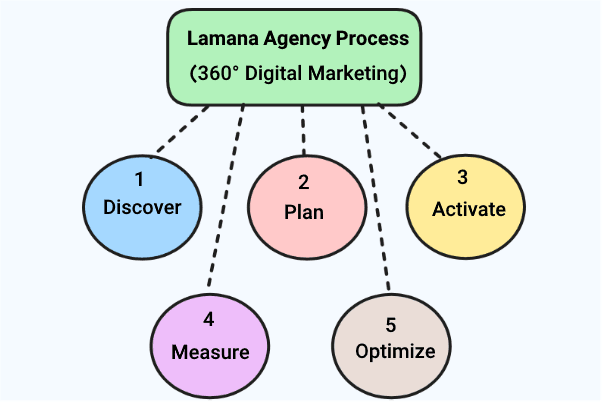
How Lamana Builds and Executes 360° Strategies
Lamana follows a five-phase process that integrates data, creativity, and cross-channel execution. Each phase ensures every customer touchpoint works together to tell one consistent story.
Our Process in 5 Phases
Lamana’s 360° digital marketing strategy is made up of five integrated phases:
Discover: The process starts with deep market research and audience analysis. It uncovers insights that help every campaign make informed decisions by creating buyer personas and segmenting the audience. This phase ensures that Lamana’s strategy is highly influenced by real customer behavior and needs.
- Plan: The second stage is planning a cross-channel strategy that meets the client’s needs. The plan defines the way each channel collaborates. We set clear goals and KPIs so that every touchpoint can enhance the same story. By coordinating budgets and creative objectives, all activities reinforce each other.
- Activate: The third stage is about rolling out campaign assets across all channels. Lamana runs effective ad campaigns across various platforms using consistent visuals and messaging, along with influencers to double the impact.
- Measure: Lamana then measures performance at every step of the funnel using analytics, CRM, and web tracking to capture funnel data from awareness to conversions. It tracks key metrics weekly and analyzes customer reviews. If a goal is not achieved, it makes immediate real-time adjustments rather than waiting months.
- Optimize: Finally, Lamana uses the data to refine the strategy. In a holistic approach, the team combines quantitative findings with storytelling so that it can meet the client’s needs in a better way. By regularly optimizing, Lamana tries to boost ROI and make it more relevant.
Real Campaign Touchpoints
A recent Lamana campaign followed this sequence: TikTok video → Instagram ad → Product landing page → WhatsApp CRM flow → Email re-engagement. It creates a consistent customer experience by guiding users through a clear sequence of touchpoints while maintaining consistent visuals and messaging at every step.
A short TikTok teaser introduces the product in a funny way. Then, interested viewers will be retargeted with a related Instagram ad to reinforce the message. The ad draws users’ attention to a customized landing page.
From there, a WhatsApp CRM flow can continue the conversation. At last, an email is sent to those who browsed but did not convert. At each stage, the brand tone and visuals remain unified so that customers recognize it with the same story.
Cultural relevance is also significant. Lamana uses local language and personalized content to make sure that each interaction feels familiar and relevant. Therefore, it builds trust and loyalty among the customers.
Integrated Experiences Build Enduring Brands
In a world where attention is scattered across various platforms, brands need to implement an integrated strategy to stand out. 360° digital marketing is not just a method; it is the key to being recognizable, staying consistent, and building long-term customer loyalty. It means using every relevant channel (social media, ads, content, email, CRM, etc.) in sync.
Lamana helps FMCG brands own every moment in the customer journey, from raising awareness to making purchases and beyond.